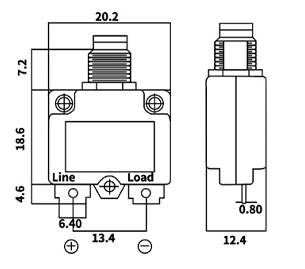The Importance of Automotive Harness Tape in Vehicle Manufacturing
In the world of automotive manufacturing, every component plays a vital role in ensuring the optimal performance and safety of vehicles. Among these components, automotive harness tape may not be the most glamorous, but it is certainly one of the most essential. This specialized tape is used to secure wiring harnesses, which are critical for the electrical systems in modern vehicles. Understanding the characteristics and significance of automotive harness tape can shed light on its integral role in vehicle assembly and maintenance.
What is Automotive Harness Tape?
Automotive harness tape is designed specifically for use in the automotive industry. It is typically made from high-performance materials that can withstand a range of environmental conditions, including extreme temperatures, moisture, and harsh chemicals. The tape is non-adhesive, which allows it to provide a snug fit around wire bundles without leaving a sticky residue. This quality is particularly important because it prevents tape remnants from causing electrical interference or motor failure.
Function and Benefits
The primary function of automotive harness tape is to bundle and protect the multitude of wires in a vehicle’s wiring harness. These harnesses play a crucial role in connecting different components of the vehicle, such as power systems, lighting, and entertainment features. Here are some key benefits of using automotive harness tape
1. Protection By enclosing wires, harness tape protects them from abrasion, crushing, and exposure to elements that could lead to deterioration. This is particularly important in high-stress areas where wires may come into contact with sharp edges or moving parts.
automotive harness tape

2. Organization In modern vehicles, the complexity of the wiring system can be overwhelming. Harness tape helps keep wires organized, reducing the risk of electrical failure caused by tangled or exposed wires. This neat arrangement also simplifies repairs and upgrades, as technicians can easily locate specific wires.
3. Weight Reduction Manufacturers are constantly looking for ways to improve fuel efficiency. Using lightweight materials for harness tape can contribute to overall weight savings in a vehicle. The lighter the vehicle, the better the fuel economy, showcasing the importance of even small components like harness tape in enhancing performance.
4. Heat Resistance Automotive harness tape is designed to handle the heat generated by various electrical components. Its ability to withstand high temperatures ensures the longevity of the wiring and reduces the risk of electrical shorts, which can be hazardous.
5. Reduced Noise The harness tape also plays a role in reducing vibrations and noise within the vehicle. By securing wires tightly, it minimizes movements that could lead to rattling or unsettling noises while driving, contributing to a more pleasant user experience.
Conclusion
In the grand scheme of automotive manufacturing, automotive harness tape may seem like a minor detail. However, its role in protecting and organizing vehicle wiring harnesses is essential for the reliability and safety of modern automobiles. As vehicles continue to become more technologically advanced, the demand for high-quality harness tape will only increase. Manufacturers must prioritize the selection of the right materials and designs to ensure that automotive harness tape meets the rigorous demands of the industry. The next time you step into a vehicle, remember that beneath the surface, there’s a finely tuned web of technology – much of which is safeguarded by the humble yet invaluable automotive harness tape.
-
XIANGFAN Rubber Tape-Ultimate Solutions for All Your Insulation NeedsNewsJun.24,2025
-
XIANGFAN Rubber Tape-Protection for Industrial and Residential ApplicationsNewsJun.24,2025
-
XIANGFAN Rubber Tape: Superior Safety and Sealing for Demanding EnvironmentsNewsJun.24,2025
-
XIANGFAN Rubber Tape: Reliable Solutions for Every Electrical ChallengeNewsJun.24,2025
-
XIANGFAN Electrical & Industrial Tape: Powering Reliability Across IndustriesNewsJun.24,2025
-
XIANGFAN Electrical & Industrial Tape: Excellence in Every ApplicationNewsJun.24,2025
